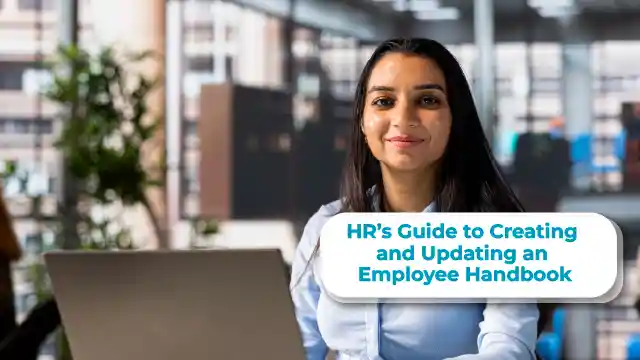What is Privilege Leave?
Privilege Leave (PL), or earned leave, is paid time off for personal needs, vacations, or emergencies. Unlike casual or sick leave, PL needs prior approval and can often be carriedforward or encashed per employer policy. It supports employee well-being without affecting pay or productivity, allowing breaks while enabling organisations to manage absences. This article explores how PL functions, its benefits for employees and organisations, and its implementation across various industries.
Whom do you want to insure?
- Customized & affordable plans
- 24/7 claim support
- Complete wellness benefits
Why Are Privilege Leaves Offered to Employees?
The chief objective of a Privilege Leave is to give employees enough time to relax and take some time off work. These leaves are also known as earned leaves and are given to employees so they can look after their well-being.
How Do Privilege Leaves Work?
Understanding how PL is structured helps employees make the most of their benefits.
Eligibility Criteria
- Generally available to full-time employees across industries.
- Some companies require a minimum tenure (e.g., six months to one year) before employees can avail of PL.
- Certain organisations extend PL benefits to contractual employees, but with different leave structures.
Accrual Process
Privilege Leave accrues over time, ensuring employees earn leave days progressively:
- Monthly Accrual: Employees earn a specific number of leave days (e.g., 1.5 PL per month, totalling 18 days per year).
- Annual Allocation: Some companies grant a fixed number of PL days at the beginning of the calendar or financial year.
- Pro-Rata Basis: For new employees, PL may be calculated based on their joining date.
Carry-Forward and Lapse Rules
The management of unused PL days varies by organisation.
- Carry-Forward Policies: Some organisations allow employees to carry forward unused leave to the following year with no loss of benefits.
- Use-It-or-Lose-It Policy: Organisations with strict leave policies can compel employees to utilise PL within the given year or lose it.
- Encashment Options: Some organisations offer an option to employees to encash unused leave, either at year-end or on resignation/retirement.
Key Features of Privilege Leave
Privilege Leave stands out among various leave types due to its unique characteristics:
- Paid Leave Benefit: PL is fully paid, making it more attractive than unpaid leave options.
- Encashment Option: Employees can encash accumulated leave, subject to company policies.
- Advance Notice Required: Unlike sick leave, PL requires prior approval to ensure smooth workflow management.
- Managerial Approval: Supervisors and HR teams must approve leave requests to prevent work disruptions.
Benefits of Privilege Leaves
The inclusion of Privilege Leaves in an organisation benefits both the employer and its employees in the following ways:
Helps employees maintain a work-life balance
Due to Privilege Leaves, the employees can take some days off to unwind and de-stress from their routine office work. This flexibility enables the employees to focus on their emotional, physical, and mental well-being.
Employees who take such leaves at periodic intervals can establish a balance between work and life. This, in turn, enables them to be productive in their work and motivates them to perform better.
Encourages planned vacations for better mental health
Going on vacation helps you relax and de-stress. Studies have proven that employees return with improved moods, are more creative, and perform better at problem-solving after a vacation.
Employees who plan their vacations can derive maximum benefit while ensuring their work is well managed in their absence. Organisations can enable this by encouraging employees to apply for their Privilege Leave well in advance so that work allocation can be planned accordingly.
Planning will ensure that the work is completed before the leave cycle so that there is no last-minute burden on the worker and their team.
Enhances employee satisfaction and retention
Privilege Leaves give employees control over their time as they can better manage their personal and professional lives. This boosts their morale and also makes them satisfied and happy with their current job. As a result, employees become more dedicated, taking ownership of all their tasks while maintaining a healthy organisational retention rate.
Reduces burnout and improves productivity
Without a clear Privilege Leave policy, employees may take unplanned leaves, disrupting work and delaying deadlines. When people feel burned out but cannot take structured leave, they might resort to sudden absences, affecting the entire team’s productivity.
When Privilege Leave is available, employees can plan their breaks and inform their managers. This helps them better manage their workload, ensure deadlines are met, and keep the team’s workflow smooth.
Difference Between Privilege Leave and Other Types of Leave
The table below compares the different leaves available at a workplace:
| Leave Type | Purpose | Paid/Unpaid | Accrual & Usage |
| Privilege Leave | Planned vacations or personal time | Paid | Accrued over time; requires approval |
| Sick Leave | Medical reasons | Paid | Limited days, usually requires a doctor’s note |
| Casual Leave | Short, unplanned absence | Paid | Typically limited, meant for emergencies |
| Maternity/Paternity Leave | Childbirth and childcare | Paid (in most cases) | Specific to new parents, governed by labour laws |
| Unpaid Leave | Additional time off beyond allotted leaves | Unpaid | Requires special approval |
Privilege Leave Application Templates
Need to apply for Privilege Leave? Here are some templates to get you started:
Template 1: Formal Leave Request
Subject: Request for Privilege Leave – [Your Name]
Dear [ABC],
Hope you are doing well. I am writing this email to apply for my Privilege Leave. I would require some time off from dates (start date - end date) for ( reason - holidays, weddings, family events, personal commitments).
I will ensure that all pending tasks are completed before the said date. I will be available by email in case any emergencies come up.
I look forward to your positive response.
Best Regards,
[Your Name]
Template 2: Short & Professional Leave Request
Subject: Privilege Leave Request – [Your Name]
Dear [XYZ],
I hope this email finds you well.
I would like to apply for a Privilege Leave from [Start Date] to [End Date]. Please let me know if my request can be accommodated.
Thank you.
Best,
[Your Name]
Privilege Leave Policies Across Industries
Different industries have varying PL structures:
Corporate Sector
- Most companies offer 15-30 days of PL annually.
- Employees may encash leave or carry forward a limited portion.
- PL policies align with standard HR best practices to maintain employee morale.
Manufacturing Sector
- Shift-based employees may have a more structured PL plan.
- Leave approvals depend on production schedules to avoid operational disruptions.
Government Employees
- Indian government employees, both central and state, earn Privilege Leave at 2.5 days per month, with a maximum limit of 300 days.
- Unused leave may be encashed during retirement or carried forward for future use.
Challenges in Managing Privilege Leaves
It is important to be aware of the probable challenges you can face while implementing Privilege Leaves in your organisation:
- Keeping track of leave balances is not easy, especially when it comes to large teams. Any miscalculation can become the cause of disputes among employees, while some may end up losing their rightful time off.
- Maintaining workflow when employees are away isn't always easy. If too many people take leave at once, projects can slow down, and the remaining team might feel overburdened.
- Another challenge is preventing the misuse of Privilege Leave. Some employees may use it strategically to extend long weekends or avoid work during busy periods, making fair enforcement important.
Best Practices for Employers
Here are some tried and tested practices that will help employers manage Privilege Leave effectively while ensuring smooth operations:
Clear Communication of Privilege Leave Policies
Clearly define leave policies so that employees know how much leave they can take, how to apply, and whether there are any restrictions. A well-documented policy prevents misunderstandings and ensures fairness in approvals.
Encouraging Employees to Use Privilege Leaves for Better Work-Life Balance
All employers should proactively tell their employees to use the Privilege Leaves allotted to them. When employees use these leaves at regular intervals, they can strike a good balance between private and professional life and return to work with a productive outlook.
Providing Flexibility for Leave Encashment and Carry-Forward
Enable flexibility for leave encashment and carry-forward to cater to varied preferences. While a payout is desirable for some employees, others value more time off. This flexibility allows employees to manage their leave based on personal preferences, promoting both financial well-being and work-life balance.
Conclusion
Privilege Leave is more than just time off. When used wisely, Privilege Leave helps prevent burnout and reduces workplace stress, ensuring that tasks remain manageable.
It permits employees to renew themselves, take care of personal business, and return to the job refreshed. For employers, this means a happier, more productive staff. In the end, Privilege Leave acts as a stepping stone towards creating a workplace that values its employees, supports them, and gives them fertile ground to deliver their best.
Ultimately, Privilege Leave plays a vital role in shaping a workplace that values its people and supports their well-being.
Looking to elevate your employee benefits? Explore and compare tailored Group Health Insurance at Policybazaar for Business, because a protected team is a productive team.

Group Health Insurance Premium Calculator
Who do you want to insure?
- Employees
- Employees & their family
Minimum lives should be 7
Include maternity coverage
Wellness At Work
Benefits of group health insurance
insurance coverage. Be assured, all your questions
will be answered
Disclaimers+



 Expert advice made easy
Expert advice made easy




























